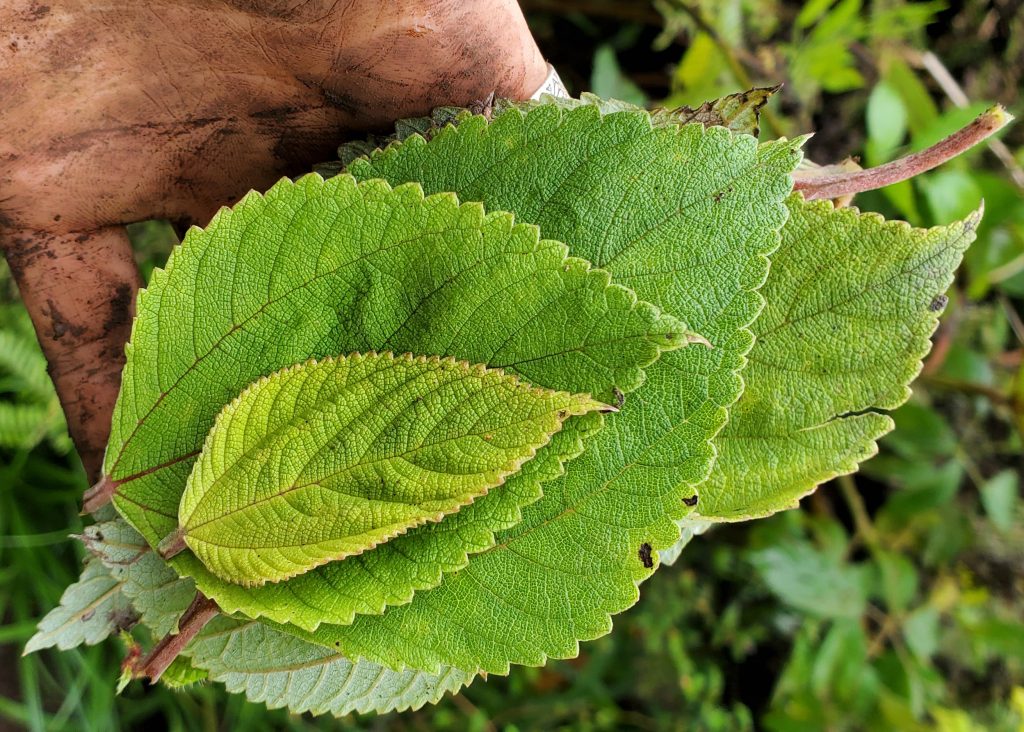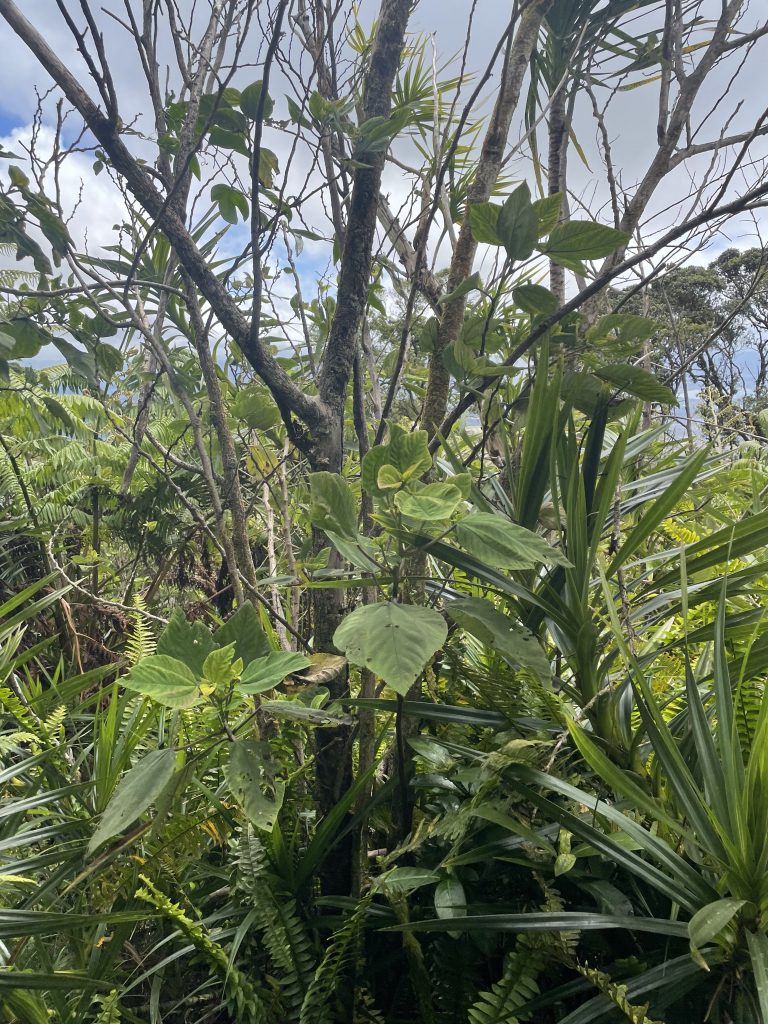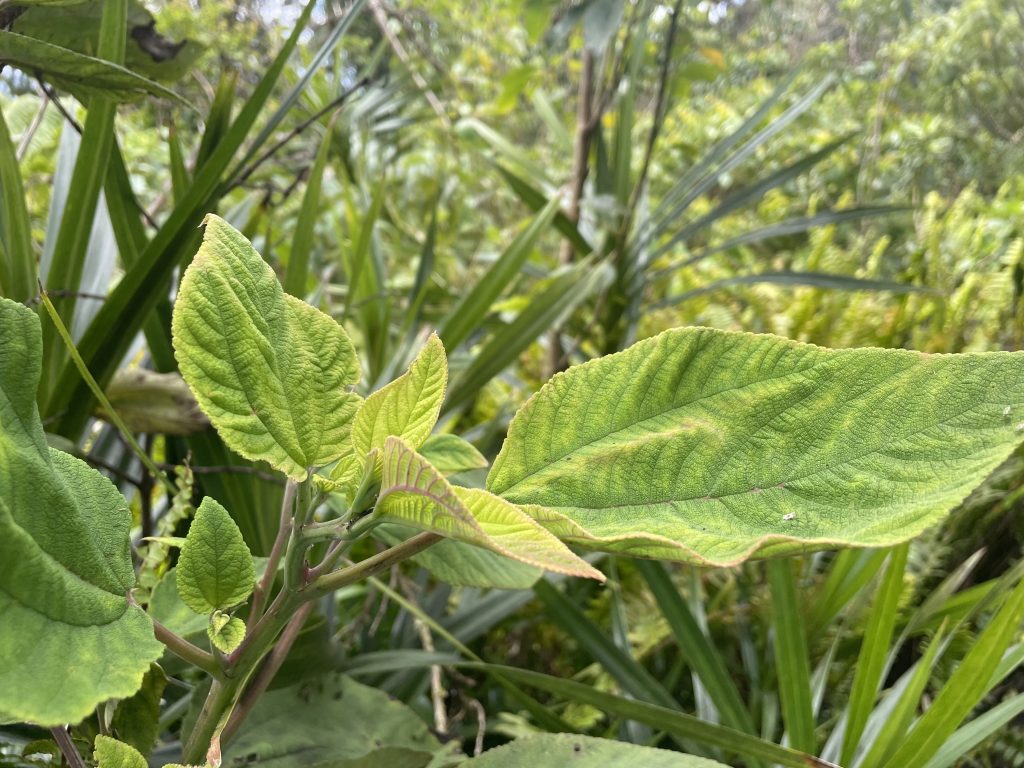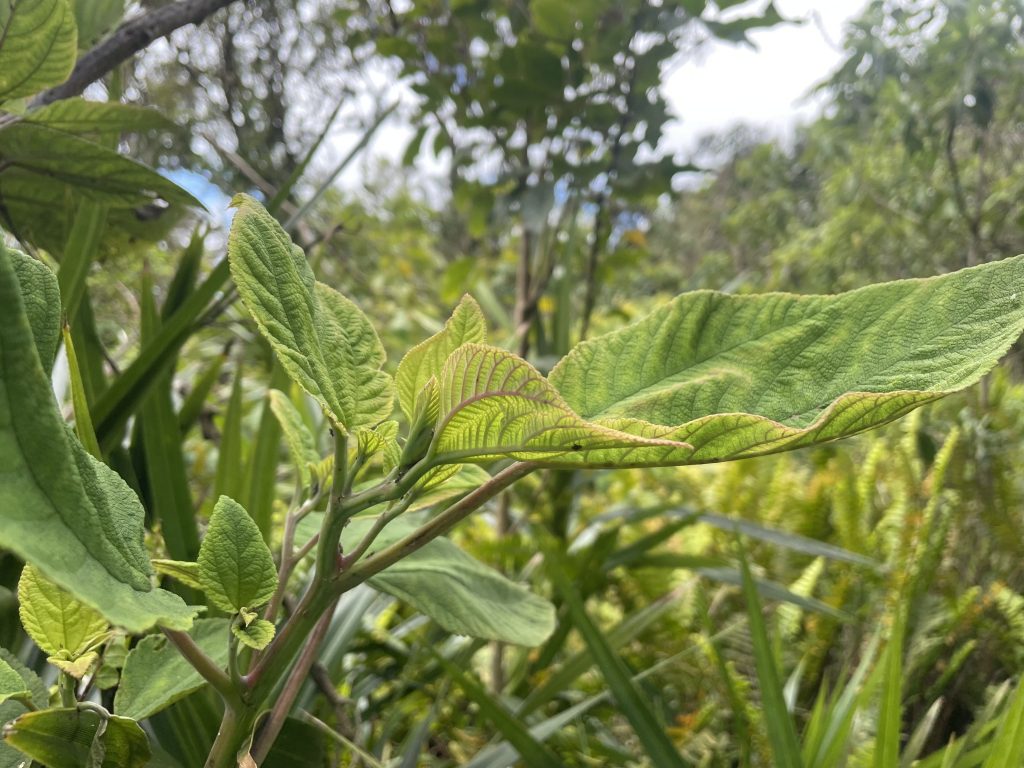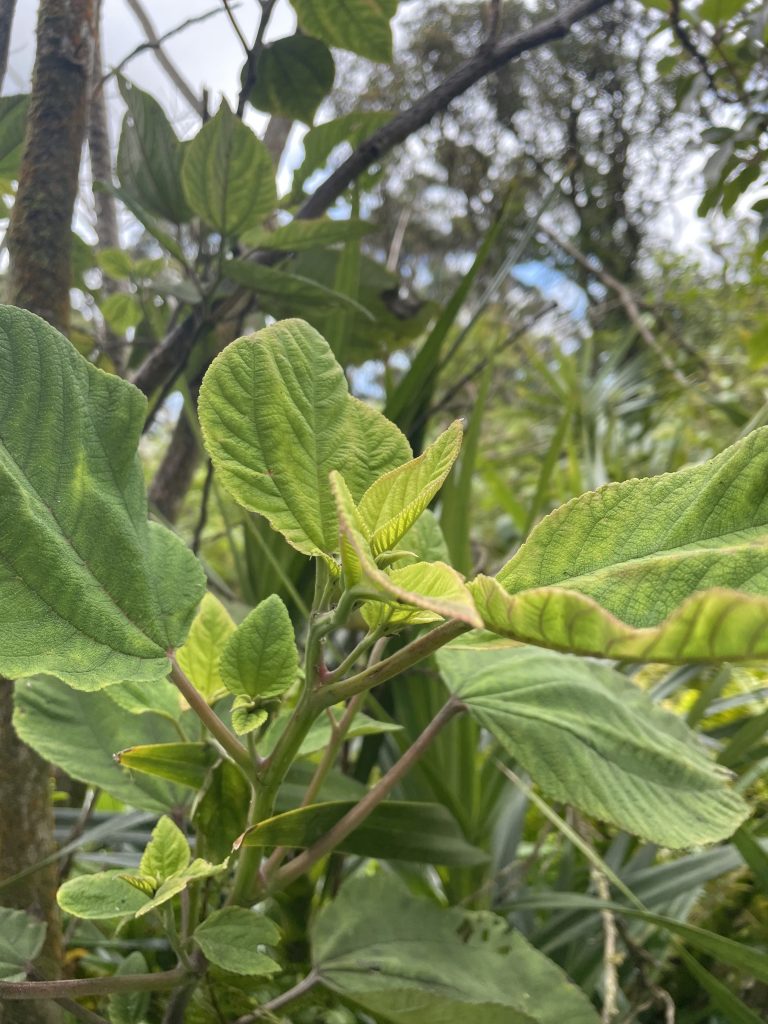Māmaki
Names
- ʻŌlelo Hawaiʻi: Māmaki
- Scientific: Pipturus albidus
Conservation Status
- NatureServe Heritage Rank G3 – Vulnerable
Species Information
Māmaki is endemic to the Hawaiian islands and a part of the Urticaceae family. It is a fast-growing species and can be a shrub or a small tree with heights ranging from 1 to 6 m (6 to 20 ft) tall. Leaves on mature growth are 0.9 to 2.4 m (3 to 8 in) long and 0.3 to 1.8 m (1 to 6 in) wide, but leaves on young growth can be much larger. The small flowers form in small clusters close to the stem in the leaf axils. The flowers are unisexual with male and female flowers usually on the same plant. (“Pipturus Albidus,” n.d.). Early Hawaiians used mamaki wood to make clubs and kapa beaters. (“Māmaki (Pipturus Albidus),” n.d.). Māmaki leaves are used medicinally in tea.
Distribution
Māmaki is found on all the Hawaiian islands except Niʻihau and Kahoʻolawe.
Habitat
Māmaki grows in coastal mesic, mixed mesic, and wet forests at elevations of 60 to 1830 m (200 to 6000 ft).
Threats
References & Additional Resources
“Māmaki (Pipturus Albidus).” Maui Nui Botanical Gardens, https://mnbg.org/hawaiian-native-plant-collection/mamaki-pipturus-albidus/.
“Pipturus Albidus.” Hawaiian Native Plant Propagation Database, College of Tropical Agriculture and Natural Resources: University of Hawaii at Manoa, https://www2.hawaii.edu/~eherring/hawnprop/pip-albi.htm.


